THE ESPRESSO MACHINE
Types of machines
Domestic machine
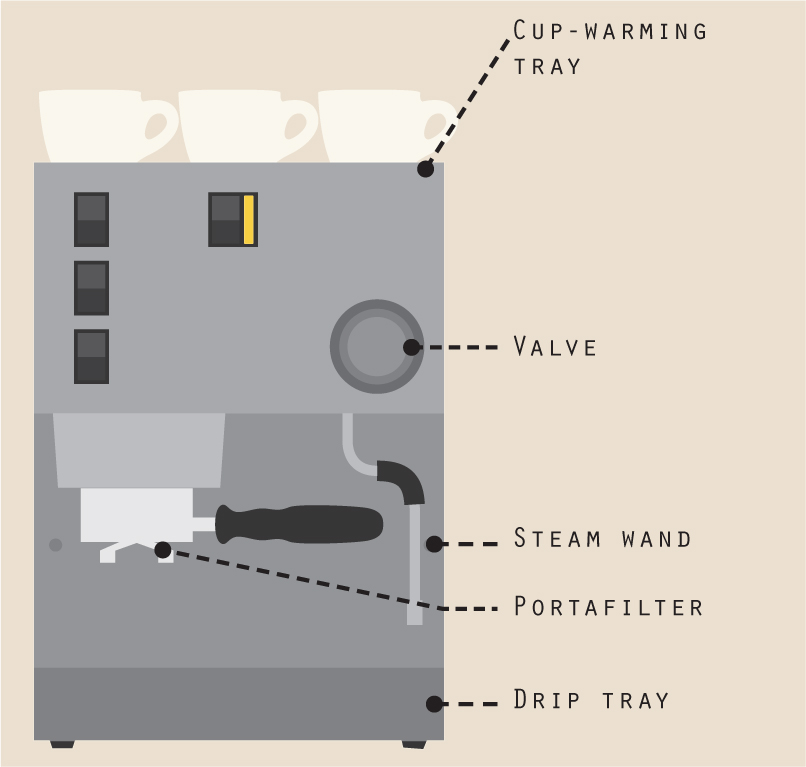
Filters and portafilters
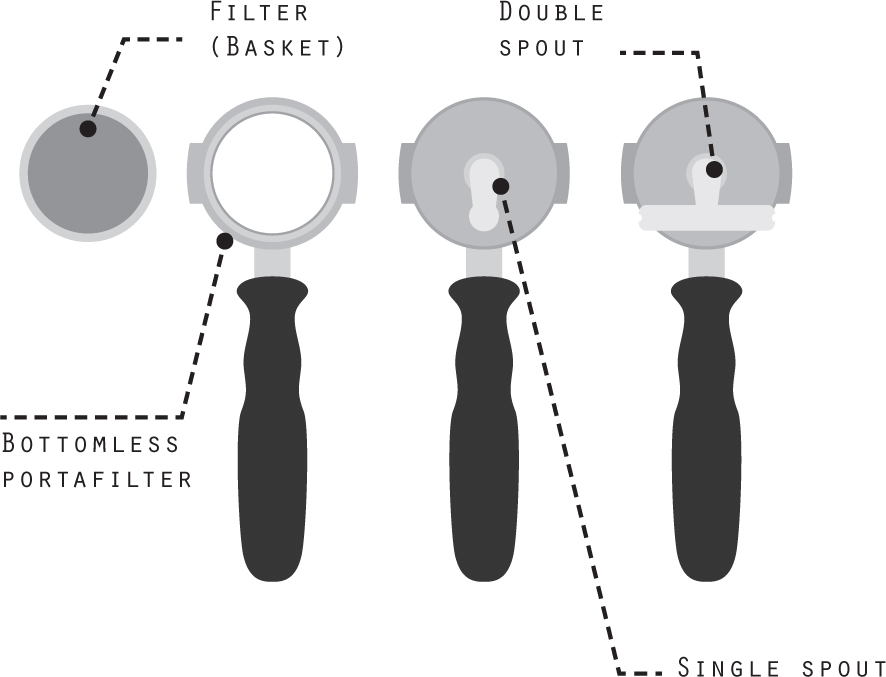
Professional machine
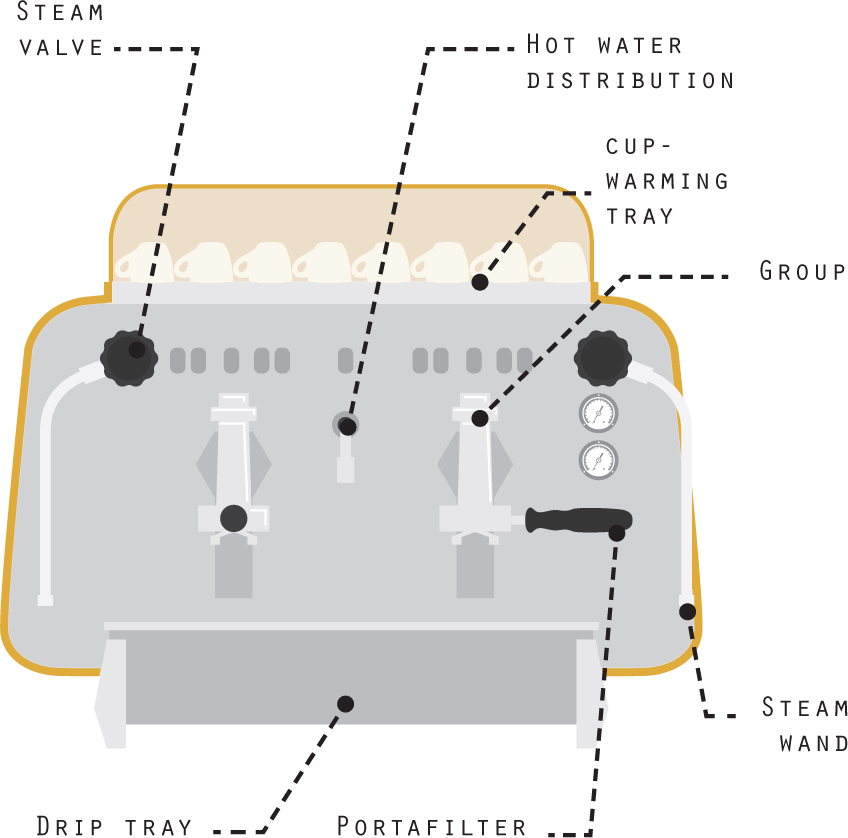
Machine models
The traditional machine is the most widely used. It is also known as an injection machine. Designed in 1961 by Carlo Ernesto Valente and named the E 61 (E for Eclipse, 1961 being the year of a total solar eclipse) for the company FAEMA, which set the standard for espresso machines for some forty years.
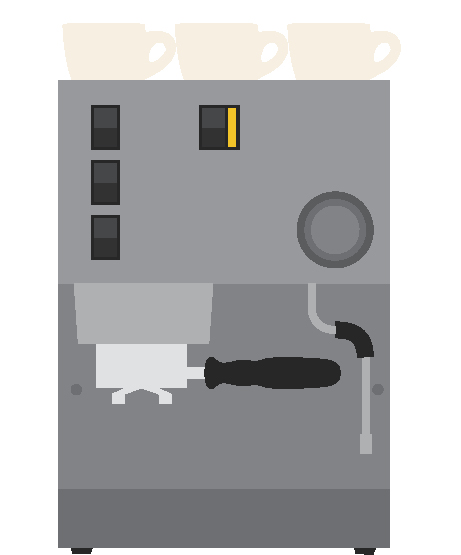
TRADITIONAL MACHINE 
PRINCIPLE:
An electromechanical pump injects water under pressure to produce the extraction.
USE:
 Professional or domestic.
Professional or domestic.
PROS:
 Multipurpose, good-quality brew.
Multipurpose, good-quality brew.
CONS:
 Need to have a good understanding of espresso extraction to achieve a good result.
Need to have a good understanding of espresso extraction to achieve a good result.
A compromise between a traditional machine and a capsule machine, the automatic machine leaves the choice of coffee up to you.

AUTOMATIC MACHINE 
PRINCIPLE:
This machine is equipped with an integrated grinder. There are various preset programs to choose from; you just have to press the appropriate button.
 USE:
USE:
Domestic.
PROS:
 Easy to use (although some menus can get very complex!), possible to use coffee beans.
Easy to use (although some menus can get very complex!), possible to use coffee beans.
CONS:
 Coffee quality leaves room for improvement (lack of body, aromas not fully revealed…), less reliable than a traditional machine, high purchase cost.
Coffee quality leaves room for improvement (lack of body, aromas not fully revealed…), less reliable than a traditional machine, high purchase cost.
The lever machine is the forerunner of the motorized pump machine. It is still widely used in southern Italy.
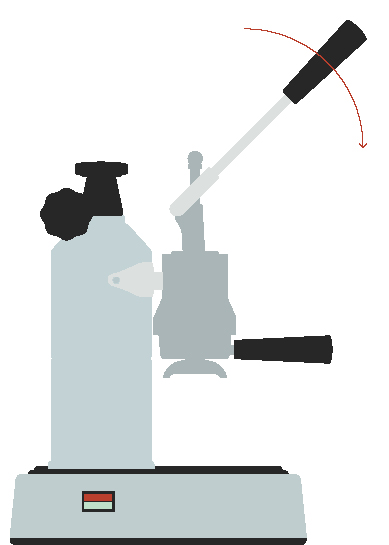
LEVER MACHINE 
PRINCIPLE:
It uses the same principle as a bicycle pump to create pressure; the force exerted by the barista on the lever is transmitted to a piston (in some cases spring-loaded).
USE:
 Professional or domestic.
Professional or domestic.
PROS:
 Attractive-looking, flavorsome ristretto, silent (no electric pump!), strengthens your arm muscles!
Attractive-looking, flavorsome ristretto, silent (no electric pump!), strengthens your arm muscles!
CONS:
 Not very practical, not really suitable for long espressos.
Not very practical, not really suitable for long espressos.
Designed for home users wanting a way of making an espresso quickly, easily, and regularly, the capsule machine also appeals to a lot of catering professionals.

CAPSULE MACHINE 
PRINCIPLE:
You insert a pre-dosed capsule into the machine, push a button, and a preset program extracts the coffee.
USE:
 Domestic.
Domestic.
PROS:
 Simple to use, consistent result in the cup, machine is inexpensive to purchase.
Simple to use, consistent result in the cup, machine is inexpensive to purchase.
CONS:
 Limited choice of coffee, cost per cup, coffee of mediocre quality, barista cannot influence the brew other than the length in the cup, not eco-friendly.
Limited choice of coffee, cost per cup, coffee of mediocre quality, barista cannot influence the brew other than the length in the cup, not eco-friendly.

